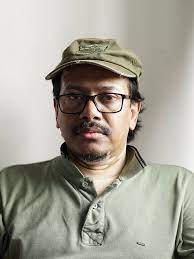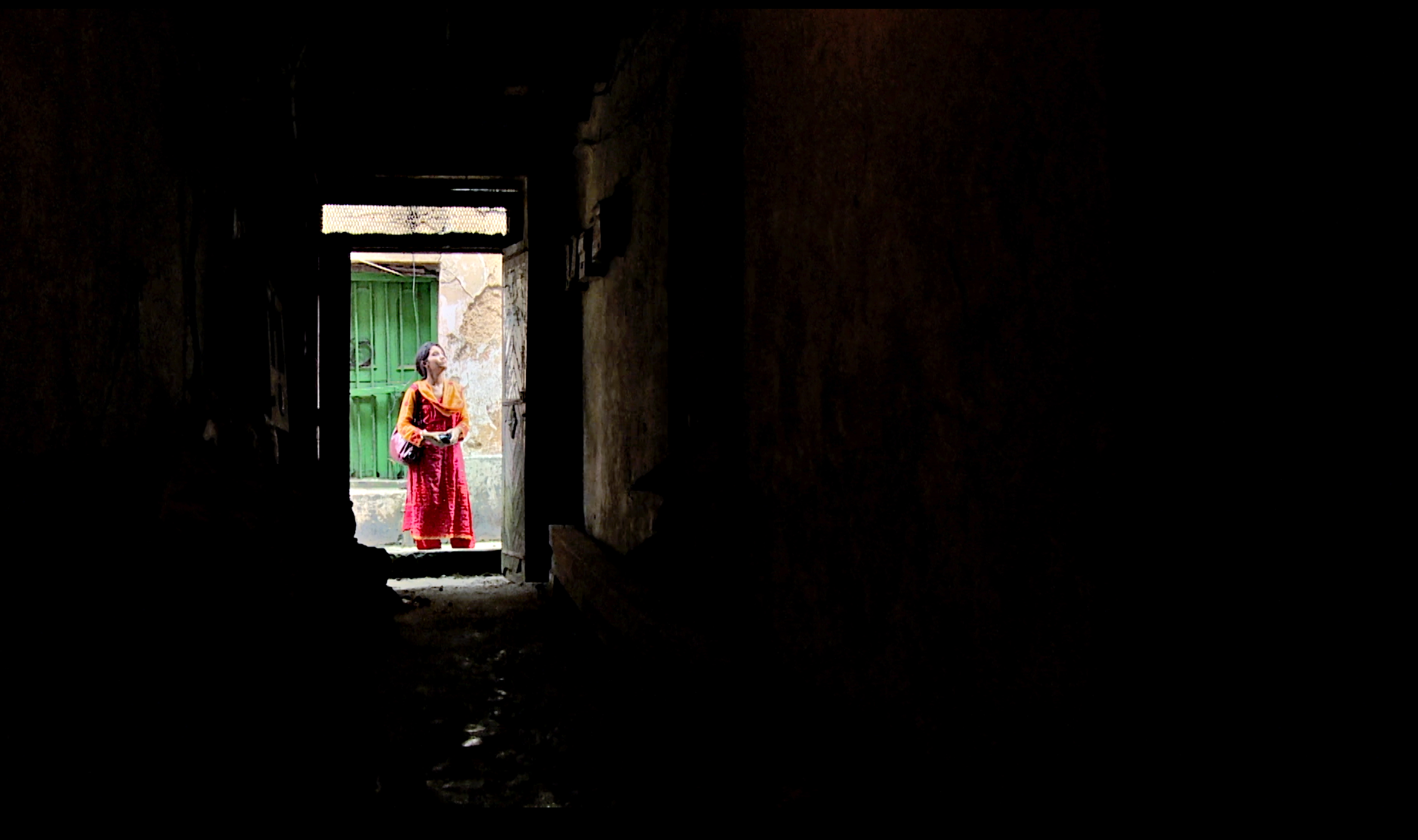
Do men and women recount the horrors of Partition differently? Do refugees prefer to revisit their roots or live with the memories of their lost homeland? Five years after completion of his fourth documentary on Partition, multiple international award-winning director SUPRIYO SEN argues why it is important to watch documentaries on the Partition holocaust survivors that unearth the truths and tears of real lives.
Why BFA commissioned this piece:
Almost every serious discussion on Bengal’s Partition cinema made in the mainstream media invariably begins and sometimes even ends with Ritwik Ghatak’s Meghe Dhaka Tara (1960), Komol Gandhar (1961), Subarnarekha (1962). Some tuck in Nimai Ghosh’s Chinnamul (1950), Rajen Tarafdar’s Palanka (1975), Goutam Ghose’s Shankhachil (2016), Srijit Mukherji’s Rajkahini (2015) and Leena Gangopadhyay and Saibal Banerjee’s Maati (2018). Barring the documentary fraternity, very few acknowledge the depth of work on this theme in the documentary space. This gnawing absence of interest in such works remains unexplained. Supriyo Sen has painstakingly followed the lives of survivors. He has risked a lot. He had interviews of love, loss and longing. In the 76th year of India’s independence, who better than him to reopen the border files?
My childhood has essentially been a repository of memories of heart-wrenching stories of Partition. I grew up listening to my parents – both refugees from East Pakistan – who carried in their heart the agony of being uprooted. They were among the 15 million whose lives were disrupted when ethnic clashes erupted all across undivided India on the eve of independence. Almost every waking moment of their lives was spent in retelling how at least a million died, 75,000 women were raped, abducted and impregnated. Thousands of families were split. Homes were burnt down. Villages abandoned. Refugee camps became the addresses of millions. As I heard their recollections, I wondered why, after more than seven decades of that horrific tragedy, we still do not have any memorial for the Partition holocaust survivors in Bengal.
That set me thinking.
I asked myself if we are disinterested simply because as a race, it suits us to hold on to enmities.
I started reading. I came across references in Nisid Hajari's account in Midnight’s Furies of the violence that accompanied the Partition. It was shocking to note that some British soldiers and journalists who had witnessed the Nazi death camps had claimed that Partition’s brutalities were worse. The more I read, the more questions I had spiraling up in my head. I wanted to understand what happens when a syncretic society is dismembered. I wanted to know the emotional residue in the hearts of those subjected to the largest forced migration in the history of humanity. Finally, I wanted to ask if it is really worth continuing to stoke the hatreds of 1947? Why not finally put 1947’s furies to rest?
The answers, I knew, were not easy to come by. Memories alone would not come to my aid. I had to personally visit the villages that my parents had left behind. This thought plagued me all the time till I decided to make a documentary. One thing led to the other. Before long, I realized I had made four documentaries on the subject of Partition. Way Back Home (2003) was a personal take on the issue of refugees who crossed over from East Pakistan to India. Then, I turned my lens to the Punjab border to make Hope Dies Last in War (2007). Some 54 Indian soldiers were taken as Prisoners of War during the Indo-Pak war of 1971. This 80-minute-long film was a saga of those families' struggle, spanning three generations, to get their men back.
Then came Wagah (2009). The 14-minute-long film explored the futility of border and jingoistic exhibitions between 'enemy countries' from the point of view of three kids who sold DVDs of the parade to the onlookers. And finally, I returned to the Indo-Bangla border again to film Our Grandparents’ Home (2017). This time, I explored how multiple generations of survivors deal with the complexities of being refugees. All through the filming of these documentaries, I was asked if it is better to live with memories and attempt a closure by revisiting the roots. Some argued that living with memories is better because finally a lot of the narrative relies on a refugee’s construct of an imagined land. In some cases, that imagined land might not have actually existed at all or is starkly different from what it is today. Others argue that it is always better to attempt a closure. I vote for closure because that is the only way one can reconcile. All my four documentaries are about reconciliation. I understand that not all refugees want to actually revisit the lost land that was once their home. The stress of trauma is overwhelming. The memories are not always pleasant. My father, for instance, had no compelling urge to revisit. But he loved it once he set foot in Barishal. My mother, on the contrary, always wanted to return. The Bangladesh that I saw when I went there was even more beautiful than what my mother had described.
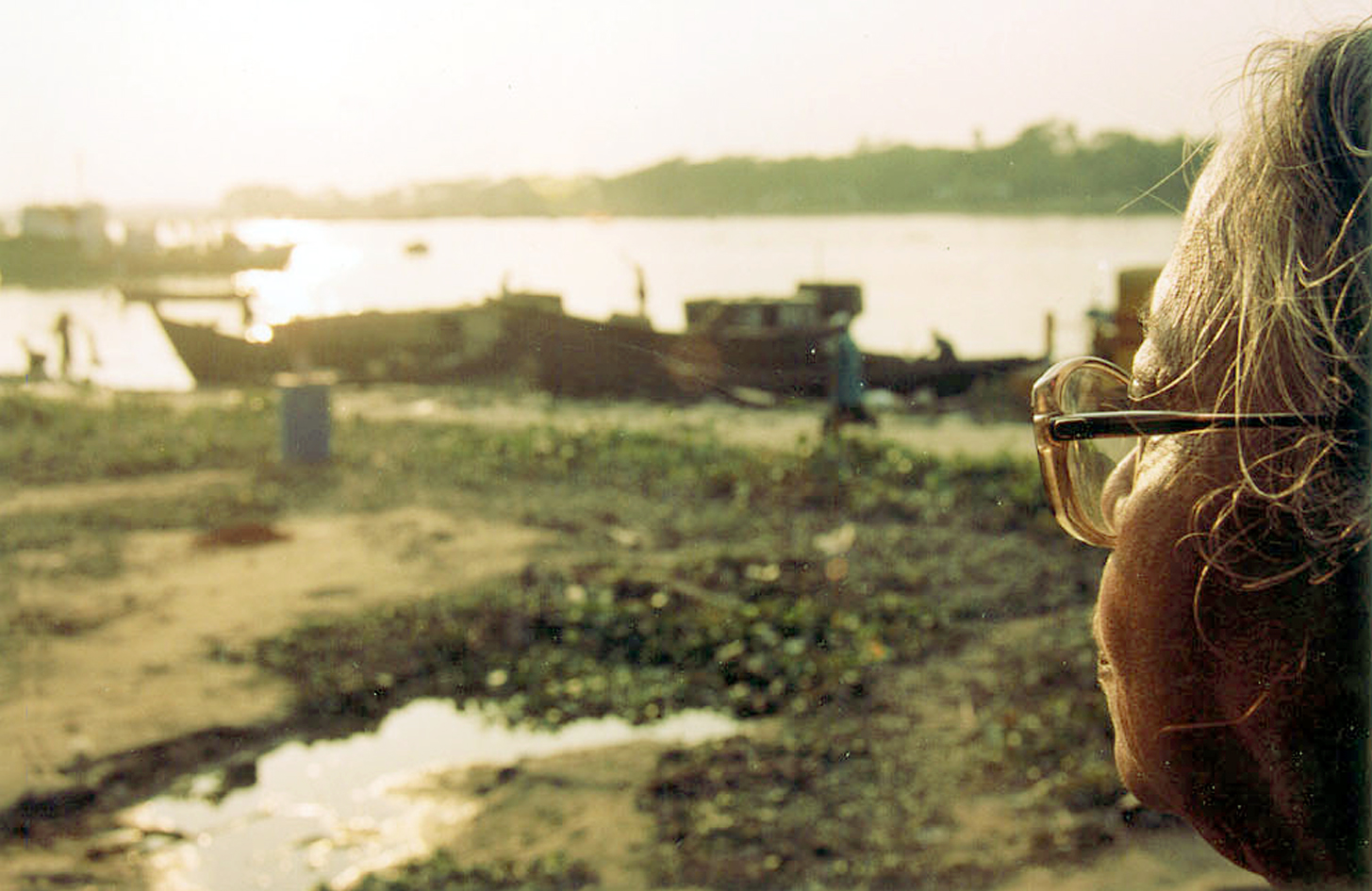
Punjab and Bengal: Different strokes
From what I had read and heard, the pattern of minority migration in the Bengal and Punjab border was different. While the migration process has continued in waves in Bengal, Punjab has largely seen it happen at one go. But the cruelty involved with Partition has been very similar on both the borders. I still shudder to confront the riots during Partition, especially the incidents of men slaughtering women and children of their own families during Partition. In our culture, women have been seen as a repository of honour. It was feared that during the riots, women might become easy preys and get raped. The idea was to maintain “purity”. To avoid being polluted by the blood of other religions and communities, many were coerced into or killed in the name of honour. There are many stories of how men often slaughtered the womenfolk in their own or extended families. Some women also committed suicide on their own volition. Stories of such honourable deaths of womenfolk are common on the Punjab border. I have read the report of the mass suicide in Rawalpindi where some 90 women jumped into the well.
From my own experiences, I did not find that many recorded stories of such deaths in the Indo-Bangla border. But it is not correct to say that such violations of women did not happen in Bengal. In Way Back Home, there is a recollection of my father of the riot in Barishal in 1950. Baba vividly recalled an incident that occurred on one particular night and said: “Some were skeptical. They felt that ultimately we won’t be able to save even the honour of women. Fearing a repetition of what had happened with women in Punjab, they said, ‘We had made the mistake of our life by not leaving as soon as Partition happened. We will have to pay the price. So, instead of leaving our women to be violated let us slaughter them ourselves’. But immediately a meeting was called and this idea was shelved.”
In contrast to Punjab, Partition writing in Bengal has come into currency only in the recent years. When I started making Way Back Home, how much was recorded on Partition? I feel that this reticence is a result of trauma and a deep sense of shame. For the longest period, most of our writers hardly concentrated on Partition even though they all had roots in Bangladesh
According to my father’s recollection, the idea was shelved. Honestly, I cannot say for sure that plans like these were stalled in all other places on the Indo-Bangla border. Many women on this side of the border have faced such atrocities. I have a feeling that upper caste Hindus of Bengal just suppressed these accounts. They preferred silence to recording such horrors.
In contrast to Punjab, Partition writing in Bengal has come into currency only in the recent years. When I started making Way Back Home, how much was recorded on Partition? I feel that this reticence is a result of trauma and a deep sense of shame. For the longest period, most of our writers hardly concentrated on Partition even though they all had roots in Bangladesh.
Over the years, I have studied this selective silence that is practiced about Partition. Hindu Shikhs were tortured and sent back from Pakistan in the same way as Muslims were tortured from Kolkata and sent to East Pakistan. Where are those stories? We talk about the Punjab riots but hardly spend words on the Delhi riots where many Muslims were tortured. Kolkata once used to have approximately 50% of Muslim population. Now that number must have dropped to 10% to 15%. How many of us even ponder about what happened to that? Where were they rehabilitated?
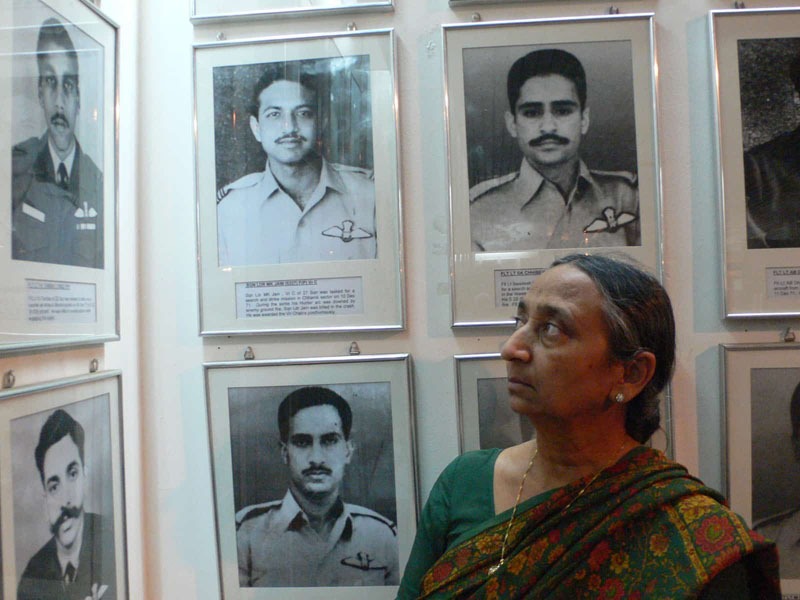
Gender and inheritance of memory
Gender is an important factor when it comes to recording and recounting the trauma of migration. I have found a distinct difference in the gaze of men and women towards Partition memories. When I look back at the memories of my father, it closely follows the formal narrative that was propagated by the State. Most men subscribe to this kind of a narrative. My father, for instance, spoke about a political turmoil, the division and the riots. He spoke about the details of violence and the victimization. The official history of Partition does not address the layers beyond the statistics. It also does not acknowledge personal histories and that of families.
The narrative of women, at least those I interviewed for my documentaries, is different. Gender, I would like to say, played a part in the way a person remembers his or her motherland. My mother chose to remember her motherland through the prism of nature, culture, landscape and emotional attachment. Even in Hope Dies Last in War, the women are critical about the system and not so much about Pakistan. They have criticized the State of Pakistan as well as spoken about the inhumanity and detachment of the Indian government. My personal experience tells me that women have the power to go beyond the State’s narrative. While the State is propagating a narrative of communal enmity, my mother had a counter narrative of harmony. It only meant that she believed in the counter narrative of communal harmony between Hindus and Muslims. She believed it because she was witness to that. Men, on the contrary, usually never shared that narrative even if they saw it.
Contrary to the perception that those forced to flee East Pakistan have a strong hatred for Muslims, my mother never had any of that. It is not just my mother who had this ability. I can also go a little further and say that most women have the ability to see the events related to Partition beyond a prism of communal hatred. The carnage in Kolkata during the riots was no less intense. Massacres, arsons, forced conversions, mass abductions and savage sexual violence. Yet the narrative of women was not restricted only to this. In Our Grandparents’ Home, Ahamadi Begum returned to Kolkata with her granddaughter, Tunazzina Sharin, to see the house on 8 Ramchand Ghosh Lane which she had left behind as a six-year-old during the Kolkata riots of 1946. Ahamadi Begum said the Minerva Theatre was owned by her uncle. Instead of harping only on the violence, she spoke of having watched Kana Keshto’s concert and plays by Ahindra Chowdhury, Chhabi Biswas, Sarajubala Devi and Molina Devi. Her face lit up when she walked into the theatre and recalled having watched plays like Shahjahan and Chand Saudagar being staged there.
My camera followed her when she retraced her steps to her house. Describing the days of riots, she never spoke ill about her neighbours. Rather, she underlined that the ‘rioters’ were all ‘outsiders’. She remembered a milkman who had pulled her father out from the chaos, dragged him to his house and locked him inside. She never forgot to underline how Hindu neighbours helped to protect her family. One neighbour even allowed them to hide in their prayer room. Ahamadi Begum’s mother was made to dress like a married Hindu lady, all complete with traditional white-and-red coral bangles and red-dyed toes. When Ahamadi Begum’s granddaughter asked her if Muslims were slaughtered, she said: ‘Do corpses have any religion?’ This, by the way, is not a dialogue that she has crammed for effects. Every word she has said is her reality and her point of view.
My personal experience tells me that women have the power to go beyond the State’s narrative. While the State is propagating a narrative of communal enmity, my mother had a counter narrative of harmony. It only meant that she believed in the counter narrative of communal harmony between Hindus and Muslims
This ability to transcend religious boundaries was also evident in my mother’s recollections. Maa’s narrative always acknowledged the help Muslim neighbours extended when she had to flee. Maa could have easily suppressed this part of her experience and not spoken about them. But she consciously didn’t. Even when she went back to Bangladesh, she asked around for all those Muslim neighbours and recalled how a Muslim customs officer escorted her family when they crossed the border in Benapole.
This ability to rise about communal hatred was more evident when my mother recounted her deeply personal story about her long lost cousin, Kamli di. All my growing years, I have heard her fondly remember Kamli mashi and speak endearingly about how she had an ear for music, sang well and even flaunted curly hair. Then, she would also speak about how the family ostracized Kamli mashi for having fallen in love with a Muslim man and marrying him. My mother never saw anything wrong in Kamli mashi’s decision. When my mother’s family left for India, Kamli mashi was left behind. Irrespective of what the world thought, my mother was forever pinning to meet her one last time in Bangladesh. She did that too. Unfortunately, it was just a year after Kamli mashi’s demise.
That meeting with my cousin (Kamli mashi’s daughter) was so poignant. My mother patiently heard my cousin recollect about Kamli mashi’s life and her thoughts on religious identity. Then she also visited her graveyard and lit a candle there in Kamli mashi’s memory.
A still from 'Wagah'
Children and border tales
Three of my documentaries are often seen as a trilogy. Way Back Home looks back at the past while Hope Dies Last in War is about the present. Wagah, which had children as protagonists, is the future. During the course of filming Wagah, I realized that kids have a unique way of looking at borders and the Partition. They simply find it amusing and farcical. They know about the futility of it all, especially since they understand that borders make no sense for locals when they will cross over if there is a natural calamity and the land beyond the barbed wires provides them a safer space to keep a toehold on. There is a comic element in their perception of the enmity issue over Kashmir and how they dissect the Beating Retreat ceremony. But if one cares to read between the lines, it will not be difficult to understand that most of what they are saying is actually true. Seen in the context of how migration has been a regular phenomenon since time immemorial, the entire construct of an artificial border with the creation of an identity and the extent to which we are going to protect it is actually hilarious.
Negotiating Memories
Deciding on how to deal with and use memories is very crucial while making these documentaries. When hardliners came to know that I am making these documentaries of Partition, they expected me to come up with a narrative to generate hatred. It did not suit them at all when they found that I had used memory for reconciliation. I was not interested in propagating that only one community had suffered due to Partition.
My parents might have their own religious identity but I projected them as refugees who have lost their homeland. In a documentary like Hope Dies Last in War, it is difficult to introduce the viewpoint of Pakistan. Yet, I did so. Victims whose family members are still missing have gone on record to state that not only has Pakistan kept our people imprisoned, India too has done the same thing.
Many of the wives of the missing POWs were newly married when the 1971 war broke out. Their last memories of their husbands are deeply personal. The first task of a documentary film is to earn the trust of his or her protagonists so that there is no hesitation in sharing
One family member of a POW told me that a son can’t accept a phrase like ‘desh ke liye shahid ho gaye’. “The State or Army can accept this narrative. But how can a family do that?” he asked in that documentary. Such questions arise since the 52 POWs are still missing since the time they fought the 1971 war. I believe one can either go to war multiple times over on this issue or can use this memory to reconcile. I wonder how many more human tragedies are we going to risk in order to continue fueling this enmity? Since I believe that reconciliation is the best way to live in peace, I have structured my film accordingly and not kept hate speeches. But that does not mean that I have manipulated reality. Of course, I have selected which interviews to retain keeping in mind my own perspective as a film-maker. I also tried to highlight the stories of human bonding in my film. But I have also deliberately retained the words of Arjuna awardee badminton player Damayanti Tambay whose husband Flt. Lt. VV Tambay is one of the missing 54 POWs who never returned home from the 1971 Indo-Pak war. “Here are some heroes waiting to come back. They need your help and support. Here are some families who need your help. They have fought for your safety, you have to fight for their freedom,” she said. After so many years, Damayanti has still not been able to go beyond the narrative of the State. She and I are not on the same page in terms of being anti-war. Yet, I chose to keep her narrative and not edit it in a way to make it seem as if we think alike.
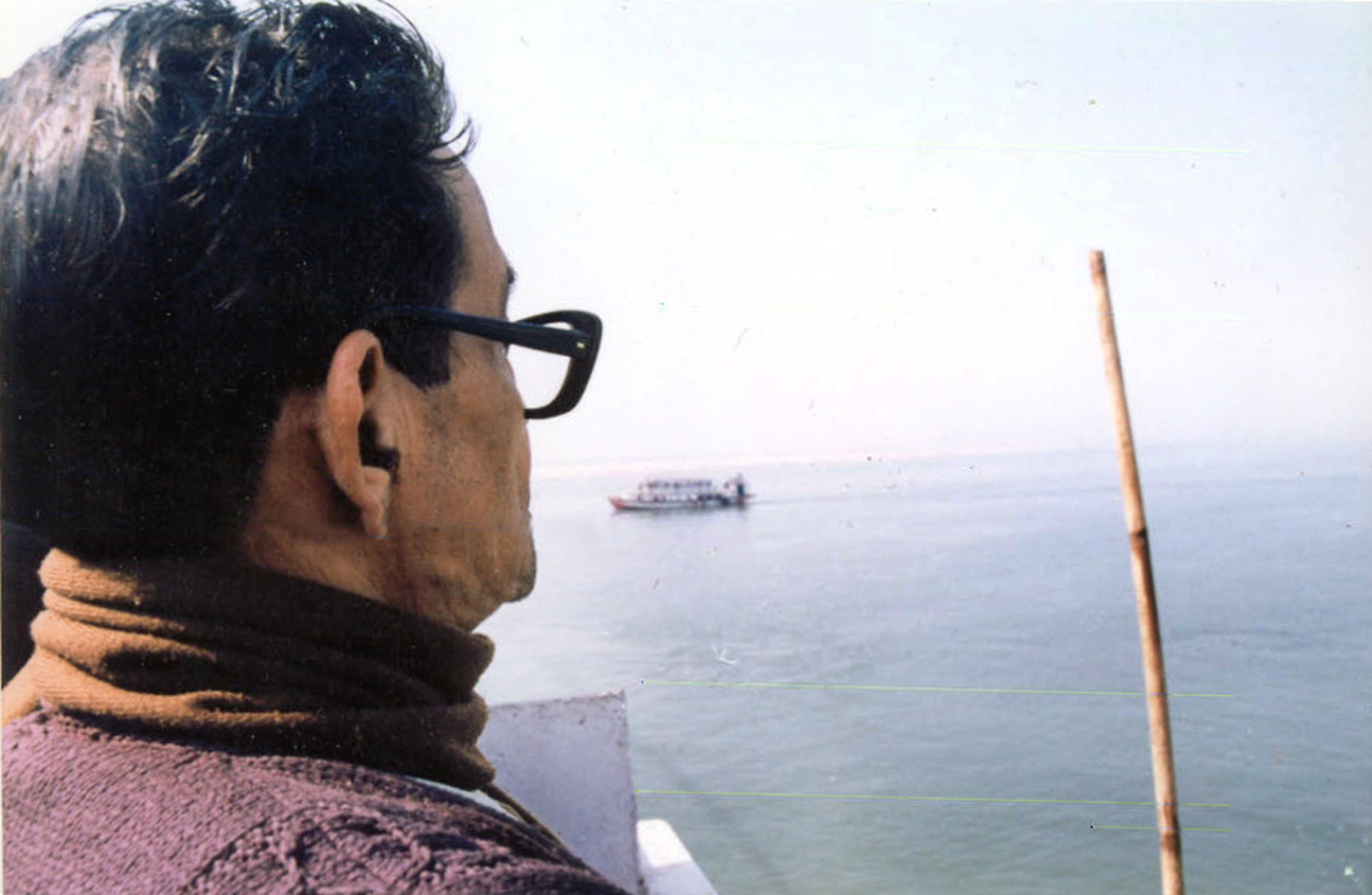
A still from 'Way Back Home'
Private memory goes public
Another very interesting element of the making of these documentaries was the way the survivors bared open their hearts on very intimate issues. Many of the wives of the missing POWs were newly married when the 1971 war broke out. Their last memories of their husbands are deeply personal. The first task of a documentary film is to earn the trust of his or her protagonists so that there is no hesitation in sharing. It was not tough doing it with my parents. That’s why my mother shared her deep family secret about Kamli mashi’s inter-religious wedding.
For the families I interviewed for Hope Dies Last in War, they had already been in the news. They had given many interviews to the media. But most of them felt betrayed by the media too. This issue was highlighted every time something on Indo-Pak relationship was in the news only to be forgotten soon. They believed I would be doing the same thing when I first approached them for making a documentary. It was only after speaking at length with Damayanti Tambay that she understood my true intentions. She came to know about my earlier works, saw how much pain a Kolkata-based director was ready to take to shoot such a documentary in an unknown terrain. Just two days before the exchange of prisoners I came to know that such an incident would take place. In two days, I had to reach Amritsar with my camera. Once they saw my sincerity in shooting this film, they slowly started opening their doors for me. The kind of questions I asked made them understand that my intention was not to make money. Slowly, they got convinced that I was artistically trying to document their historic journey. In the end, they started talking. I still get goosebumps when I remember Damayanti saying how she dealt with the blow. For six months, she had wept profusely and even visited astrologers. Then a day came when she decided to stop crying and start fighting. Since then, my persona changed. On the last day of the shooting, I saw tears in her eyes. That is there in my documentary too. Our relationship strengthened with time and I remember asking her how she dealt with desire. It was not easy for her to answer. Firstly, I was a man. Secondly, I was so many years younger than her. Yet, she spoke in a most dignified manner about how she had initially shut down completely.
A spine-chilling incident happened one day when I received a call from a lady based abroad. This was quite a few years after Hope Dies Last in War. She said she had watched the documentary and was completely blown away by what it had shown. I clearly remember her words: “I have grown up knowing that my father had died in the 1971 war. My mother had remarried. Your documentary mentioned my father as a POW!”
Others too understood my honest intention behind wanting to ask about such intimate issues. Poonam Goswami, the wife of Flt. Lt. Sudhir Goswami, spoke to me about how she fell in love when she first saw him in uniform. She shared photos of her engagement, wedding and even honeymoon. On camera, she even read out his last letter to her that has intimate details which couples share.
While listening to their stories, I could feel how the inability of finding closure had impacted them. My parents’ memories are about people who, they know, are dead. But these family members are living in an unresolved space. They are just stuck in time. Few have moved on. But most haven’t.
Stories untold
A spine-chilling incident happened one day when I received a call from a lady based abroad. This was quite a few years after Hope Dies Last in War. She said she had watched the documentary and was completely blown away by what it had shown. I clearly remember her words: “I have grown up knowing that my father had died in the 1971 war. My mother had remarried. Your documentary mentioned my father as a POW!” In my documentary, I had shown a Time Magazine article that carried photographs of Indian prisoners looking from behind bars. One of them was probably her father! It completely reoriented the personal history she was living with all her life and put her in an abyss of emotional turmoil. It is painful to wait endlessly with uncertainty. It is no less tormenting to suddenly be thrust into a space where one discovers that the narrative one is living with might not be true!
Death threw up different kinds of stories during my film-making days. While this incident opened up a new chapter of uncertainty, my father tried to find closure by revisiting the Barishal crematorium where his five-year-old brother, Nimai, was laid to rest after he succumbed to cholera. It is customary to bury if Hindu children of that age expired. My father’s family had buried him in one corner. There was a strange feeling when I heard my father recall how he had carried the lifeless body of his brother on a stormy afternoon to bury him there. They had buried the little one while vultures hovered all around. Baba was only seven then. As he recollected, I wondered how it felt to believe that the soil that was once used to bury his brother could no longer be called his homeland.
Shooting Wagah threw up other challenges. For starters, I did not get a visa to shoot in Pakistan. But my German producers got their visa. It was absurd to think that despite being a neighbour, I had no right to step into that land. But German producers could easily do that! The initial plan was to shoot for three days in Pakistan. They would then come to Amritsar and we would see the rush and then complete the rest of the shooting. The experience of shooting for the first three days was amazing. I used to go and sit on the Indian side of the border and see my own film being shot on the other side. I had no power to say even ‘action’ or ‘cut’.
Shooting Our Grandparents’ Home threw up a profound experience when I accompanied Ahamadi Begum to the house she left behind in Kolkata. While knocking on the door, she was apprehensive about the reaction of the current owner. “Hope no one will say anything to my visit…” This one sentence set me thinking about the borders that Partition created in the refugees’ mind. They left their homeland at a tender age, not knowing if they would ever be able to return. And by the time they did, they were overburdened by the trauma and wondered how they would be received. Her father could not take the trauma and died soon after Partition. Even my mother’s father couldn’t take the trauma after having lost his all.
I feel such stories of the Partition holocaust survivors need to be told, heard and watched. The tapestry of experience is rich; the undertones deep. Most importantly, I feel we have delayed long enough to bust many conventional myths regarding binaries that have supposedly echoed along our borders. It is about time to revisit. And, rethink.

